Concept
The idea to construct a board for the co-events developed after Countdown in Brighton 2022, as this was the first "Lincoln"-style tournament I attended. Under the "Lincoln" style, everyone is separated into groups of three in each round and uses card sets, principally from editions of the Countdown board game, throughout the games. With individual matches being carried out on the tables, I saw this as the perfect opportunity to enhance the aesthetics for the people on my table by matching the appearance of the show's production elements.
─ ─ ─ ─ ─ ─ ─ ─ ─ ─
Purpose
The board debuted at Countdown in Edinburgh 2022, held in the October of that year, initially for use in the preliminary games. Since the double-header of events in Lincoln in January 2023, however, the board has additionally been utilised for the grand final match between the top two competitors at the conclusion of the tournament. Once an event's heat games have been completed, there's typically a 10–15-minute layover time to allow for the final's preparation. For the final, the board is mounted upright on a tablet stand in order for everyone in the room to see the selections. Providing there is adequate space in the venue, I opt for a clearance of roughly 3 metres between the board and the contestants facing it, which allows for a good vantage point for those spectating and playing along. Prior to the board, the members involved in the final — host, adjudicator(s) and two contestants — would be stationed at a single table, in the same configuration as heat games, with the cards being dealt for only them to see without any obstructions. Although this setup worked for those involved in the game, it meant everyone else had to huddle around the table in order to see the selections. Now, with the board allowing the cards to stand almost upright, it has successfully eradicated that issue: others playing along can sit at the surrounding tables with equal viewership, allowing for more inclusion as opposed to the game focusing solely on the two finalists.
─ ─ ─ ─ ─ ─ ─ ─ ─ ─
Concept, materials and specifications
From the start, the board was conceived as a miniature replica of that seen on the show but lacking the boxes for the vowels and consonants on the letters face and the large whiteboard on the numbers face. The reason for omitting these parts was simply because they weren't essential at the events, and including them would have made it impossible for the board to be hauled everywhere. Furthermore, the inclusion of the boxes would have required the host to stand in front of the board to put up the selections, thereby obscuring them for certain spectators.
─ ─ ─ ─ ─ ─ ─ ─ ─ ─
Materials and specifications
The board is made up of five 3mm-thick MDF sheets, with the necessary cutouts on each piece achieved by laser cutting. These are primed and sanded, then spray-painted in the appropriate colours before being glued down. The outer section consists of MDF strips lined with royal blue-coloured faux leather (felt on the original board). Dimensions wise, it's 750mm long and 230mm tall, with each of the pockets measuring 75×80mm (length by height) to comfortably fit the 70mm² cards while including a 10mm finger space at the top for easy removal. In comparison to the board on the show, mine is approximately two-thirds of its length, a quarter of the height of the letters face due to the absence of the boxes, and roughly a fifth of the height of the numbers face due to the omission of the whiteboard underneath.
─ ─ ─ ─ ─ ─ ─ ─ ─ ─
Later enhancements
Unsurprisingly with me, it didn't take long for the original board to undergo its first lot of changes:
▸ November 2022: the first change, made just two weeks after the board was completed, involved the target section on the numbers side being repainted into a lighter blue shade to match the background of the cards more closely.
▸ February 2023: because of the dividers between the pockets not sticking down properly, the pockets themselves had to be repainted to match the dividers in order to conceal the residue left over from the glue. At the same time, the felt, lined around the border, was stripped and replaced.
▸ August 2023: as of the London 2023 tournament, the board has included covers to conceal the conundrum scramble in the grand final more effectively; previously, the board was lifted from the tablet stand and rotated downwards to face the contestants, and the answer was revealed by having the scrambled letters rearranged onto the bottom row of the board. Now, with the covers in place, the scramble and answer can be loaded beforehand. The covers sit in the board's pockets without interfering with the cards behind them, and are lifted out in sync with the clock starting to show the jumbled-up letters.
▸ September 2023: Blackpool 2023 (the event immediately following London) introduced a separate set of cards for the conundrum(s) in the final. Using the separate deck, the scramble and answer are now arranged into the appropriate order and slipped into a sleeve before the game starts, meaning they can be instantly put up on the board for the conundrum round. Before the extra cards, the conundrum scramble had to be set gradually by taking the required letters from the pile of discarded vowels and consonants at the end of each round. If any of the letters needed for the scramble hadn't come out in those rounds, the hosts had to sift through the remainder of the decks until it/they were found. As well as causing delays, it suggested a rare letter (e.g. Q or X) was going to be included in the answer.
▸ November 2024: the final change made to the original board involved painting the pockets into a lighter shade of blue to reinstate the two-colour scheme it was painted in when new. The two-colour scheme reflects the look of the board from the "original" blue set, which is what I intended to achieve from the get-go.
─ ─ ─ ─ ─ ─ ─ ─ ─ ─
Gallery (original board)
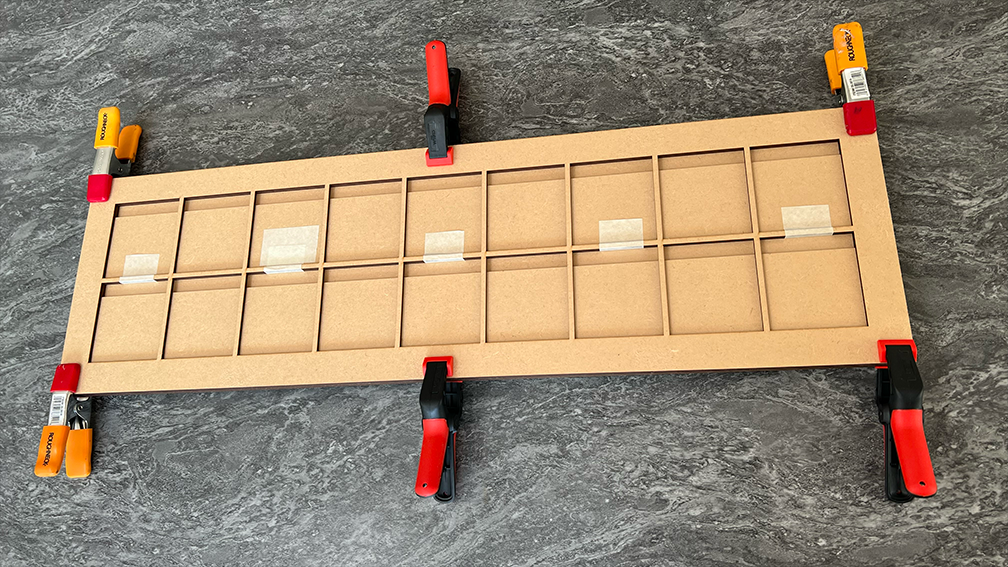
Layered parts prior to decorating (letters face).
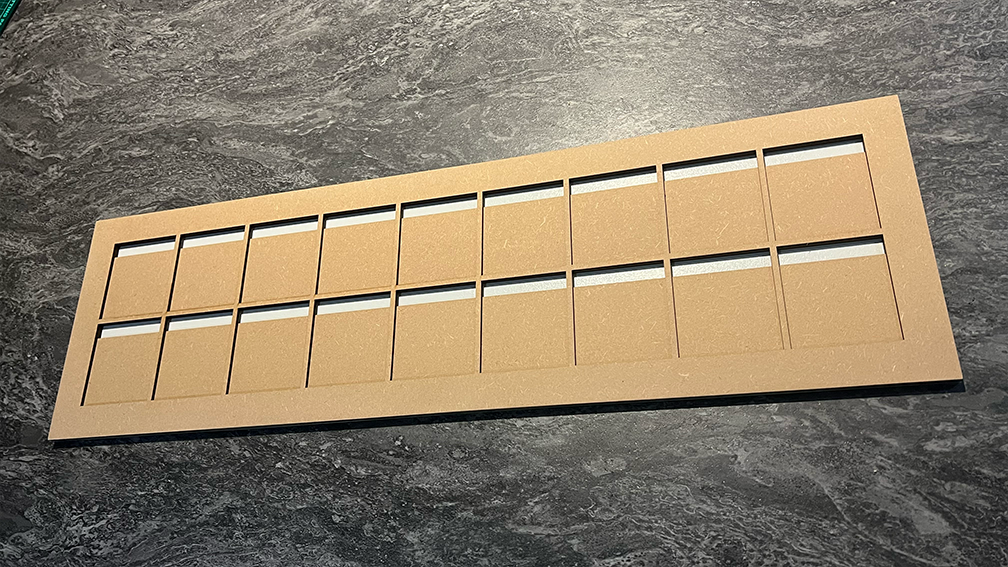
Primed middle piece (letters face).

Primed pockets (letters face).

Primed pockets (numbers face).
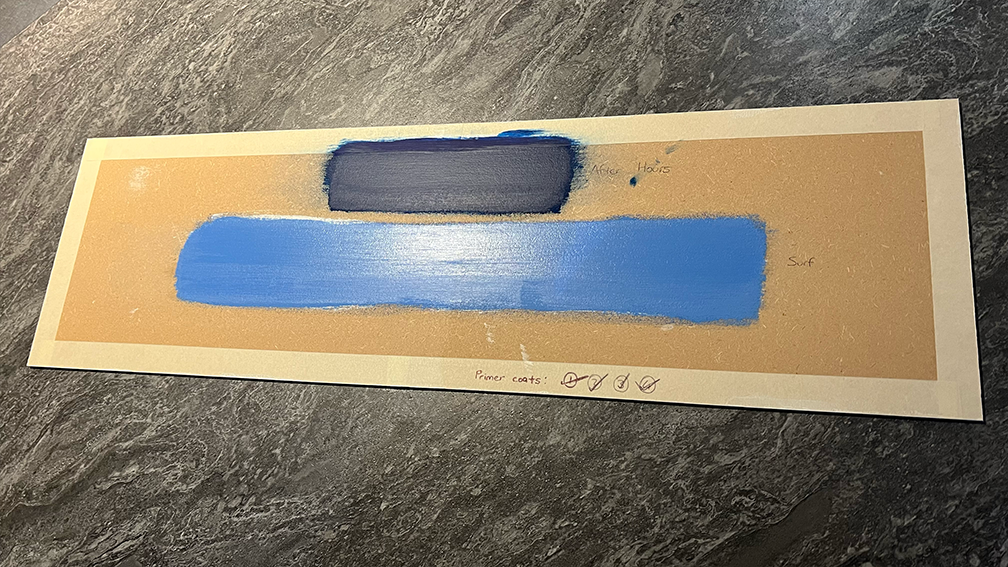
Painted middle piece (numbers face).
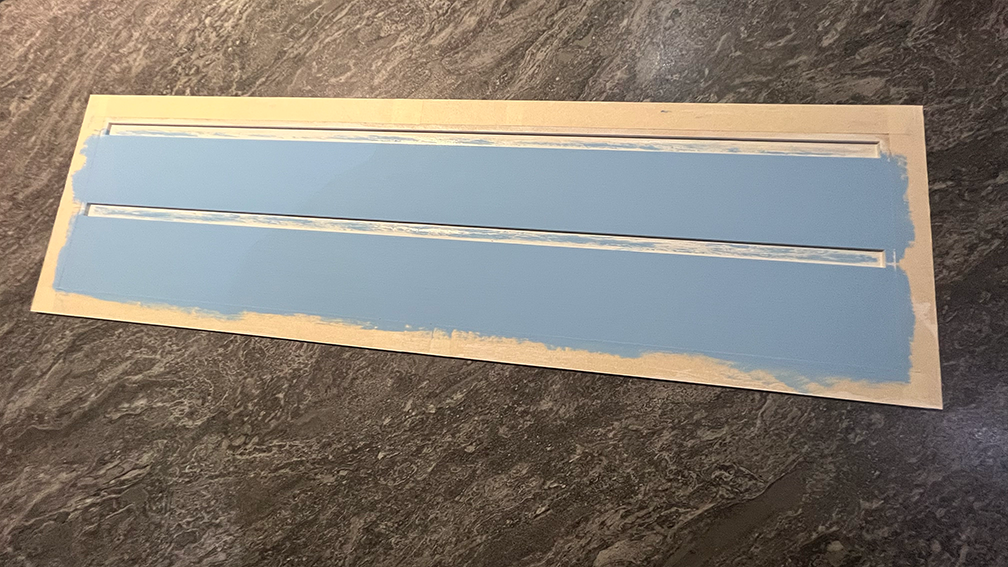
Painted letters pockets.
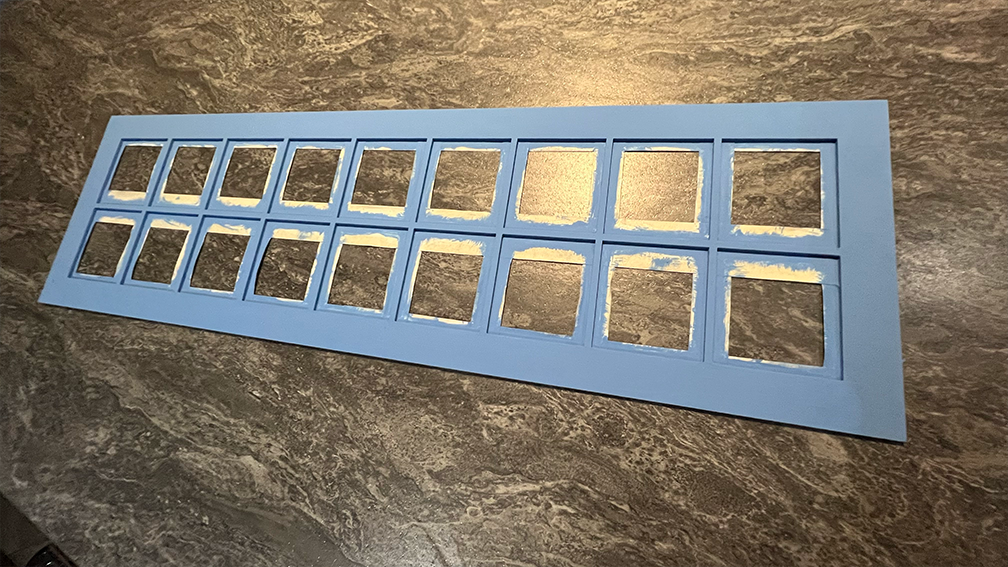
Painted letters grid.
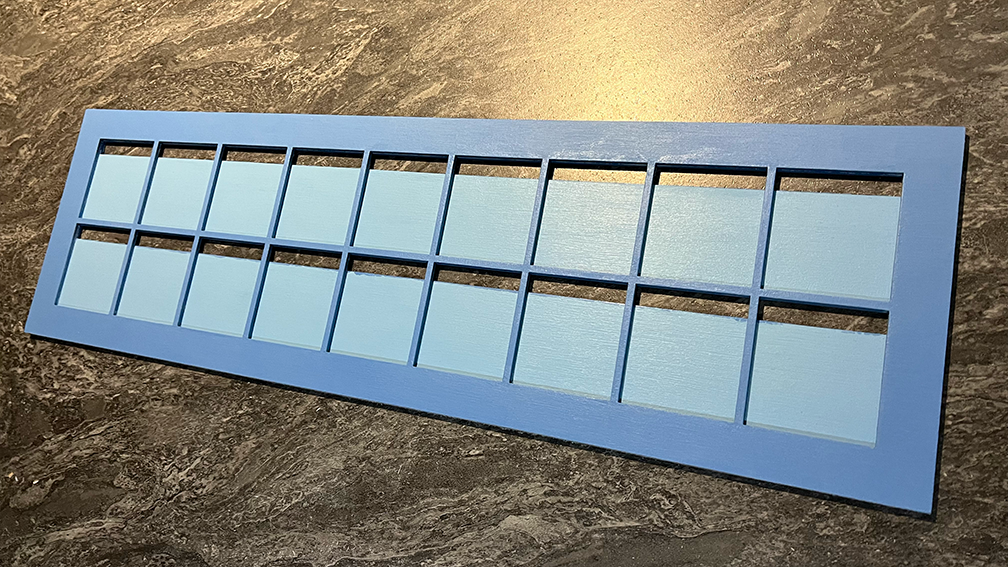
Painted layers of the letters face.
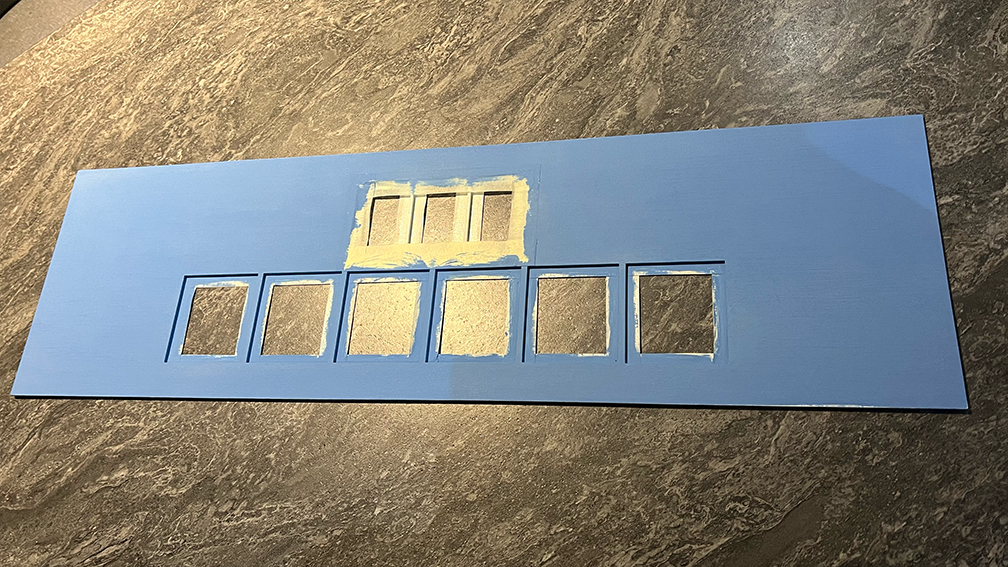
Painted numbers grid.
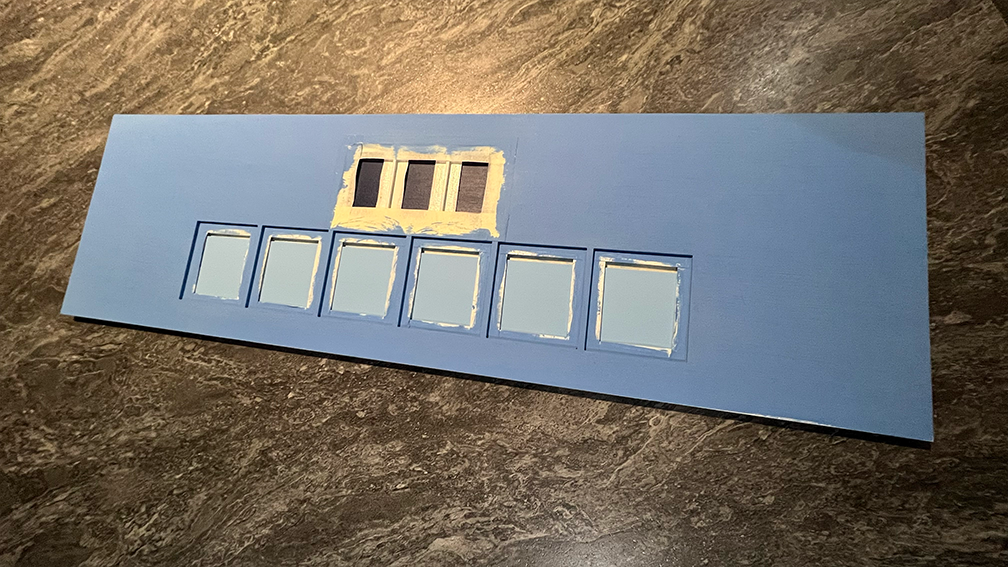
Painted layers of the numbers face.
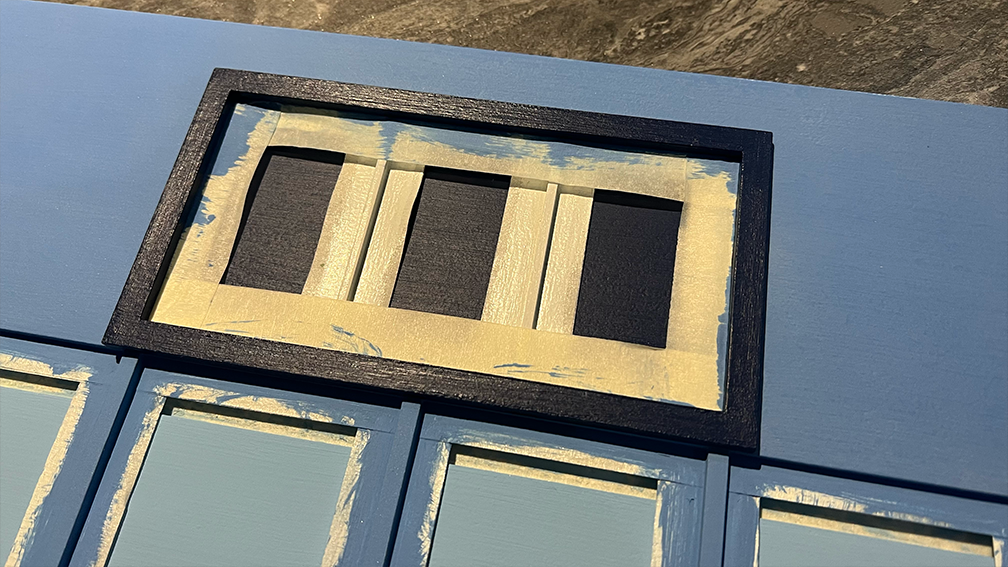
Target number section (repainted soon after).
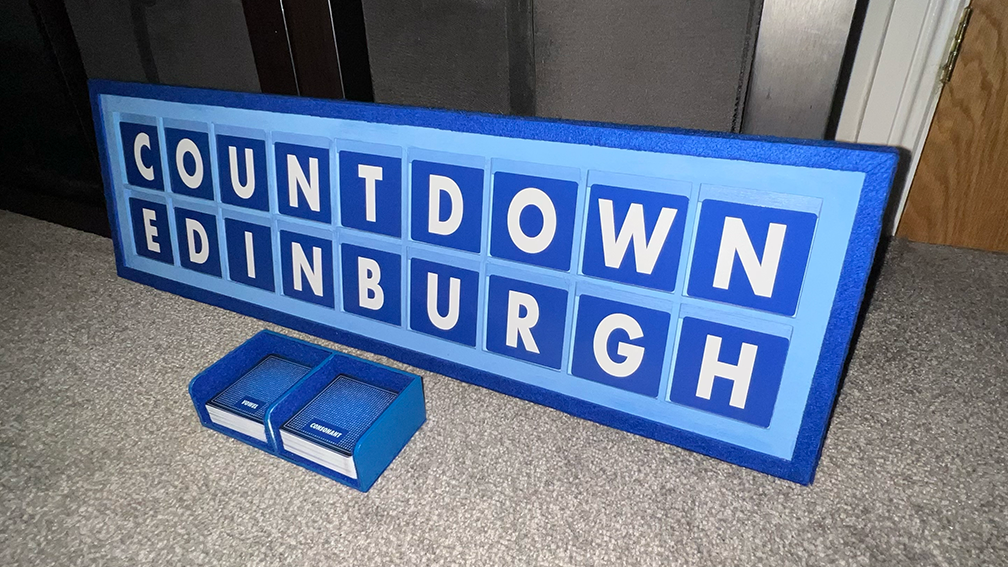
Final outcome prior to the Edinburgh 2022 event.
The original board's development (August–September 2022).
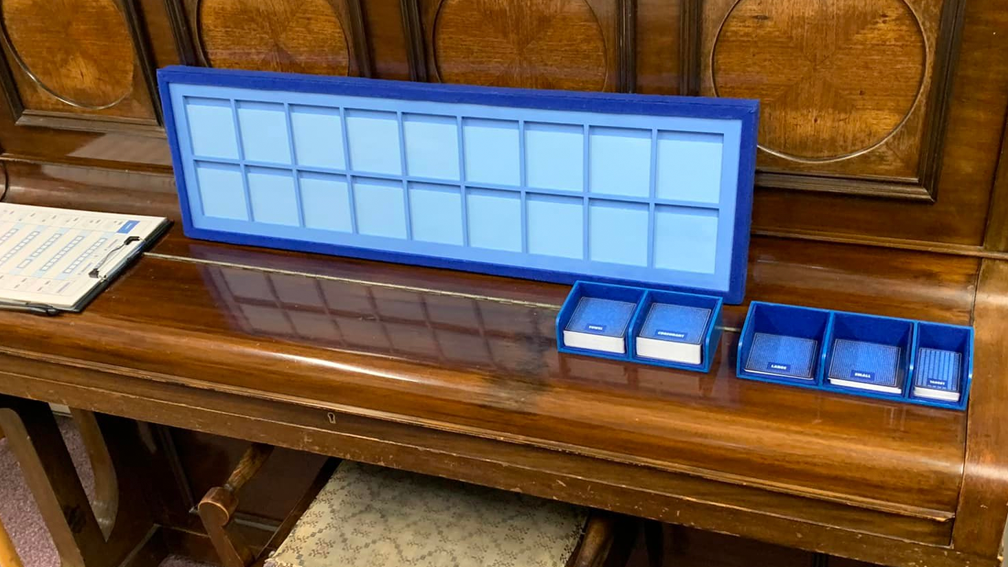
Braintree 2022 (05/11/2022)

The shabby-looking pockets in May 2024.

The board with a cuppa at Birmingham 2024 (02/08/2024).
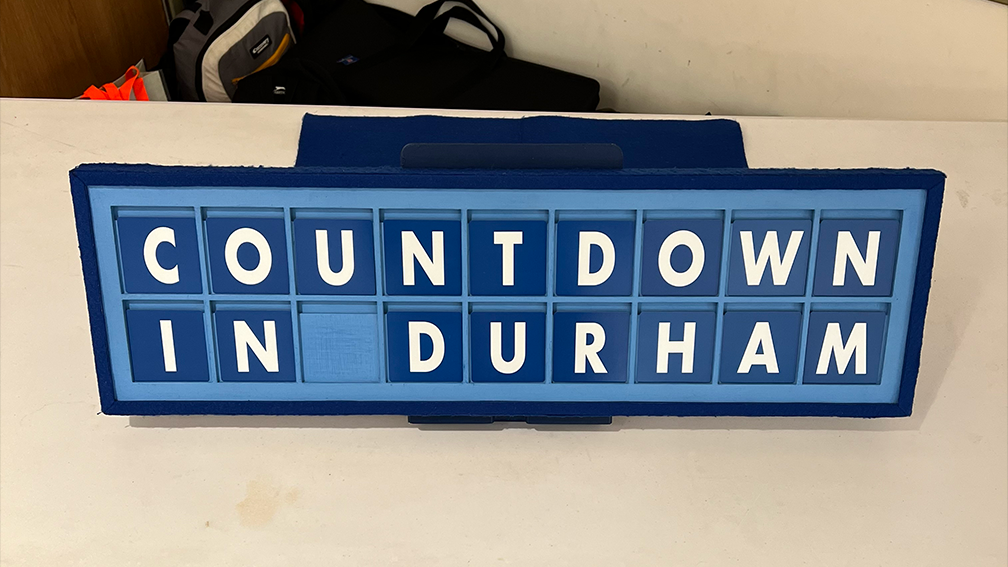
Durham 2024 (06/07/2024)
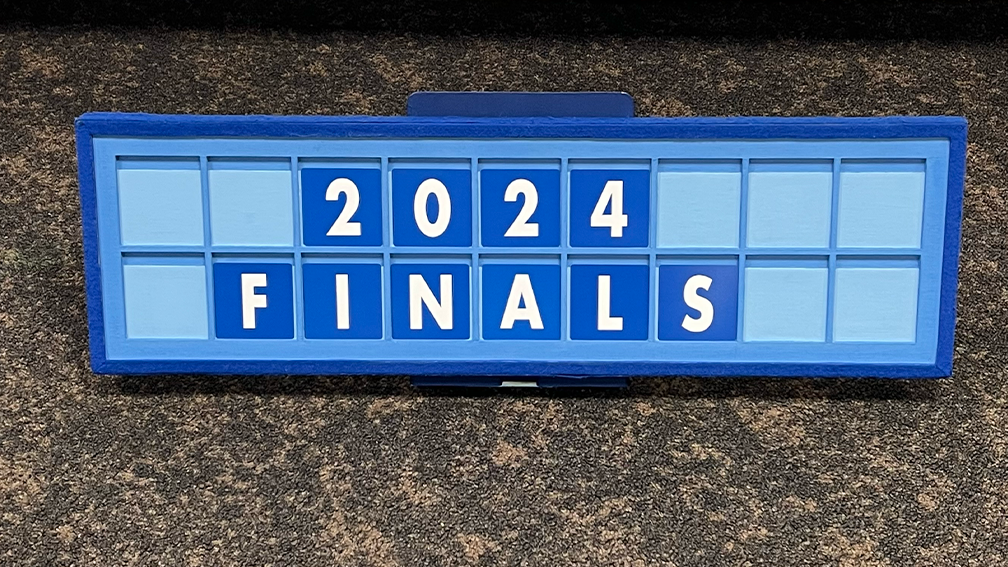
2024 FOCAL finals (30/11/2024), featuring the repainted pockets.

Lincoln 2025: The Predrinks (24/01/2025)
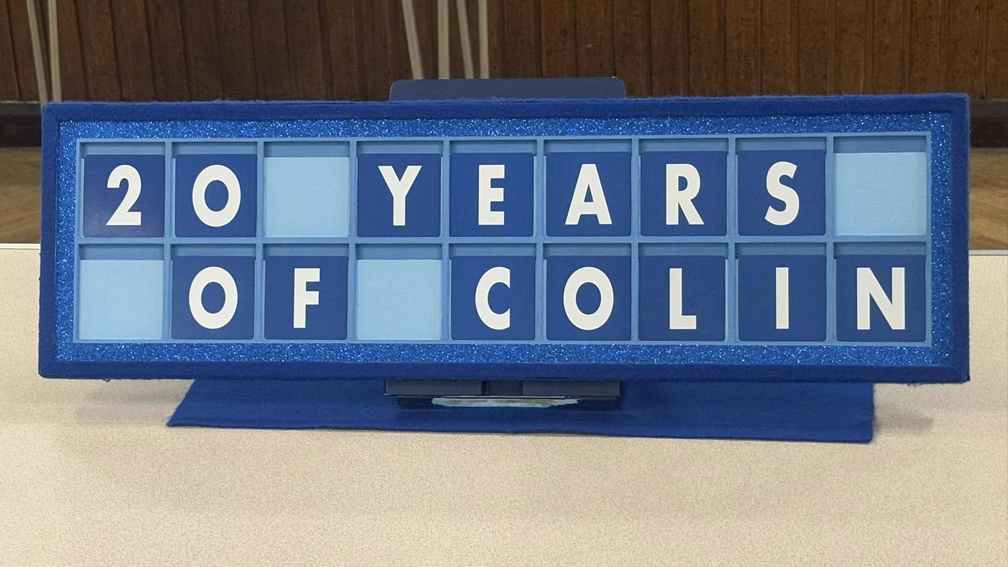
Lincoln 2025 (25/01/2025)

Rugby 2025 (22/03/2025)
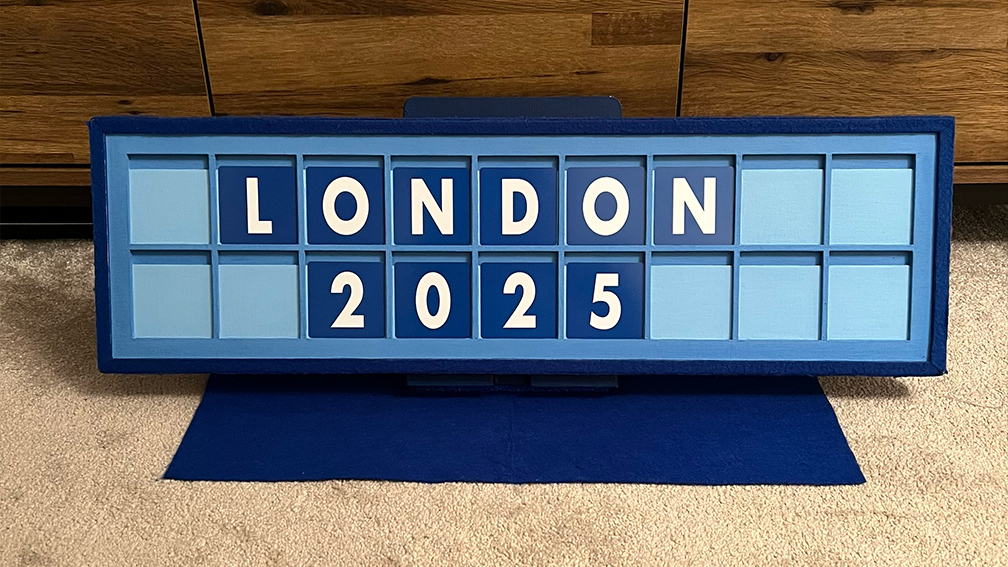
Display for London 2025 (12/04/2025).
The original board at various tournaments between November 2022 and March 2025.
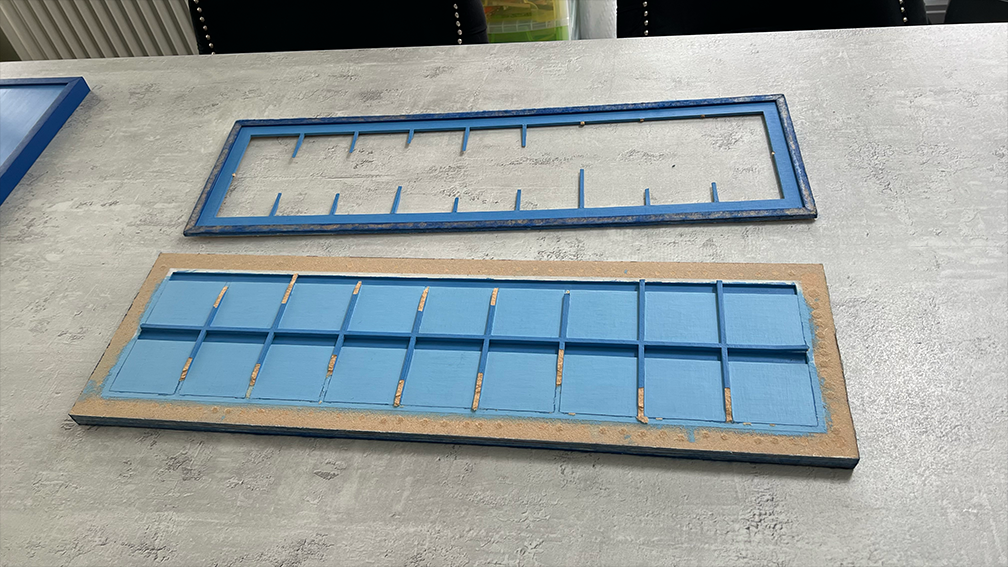
Letters face with the border stripped off.
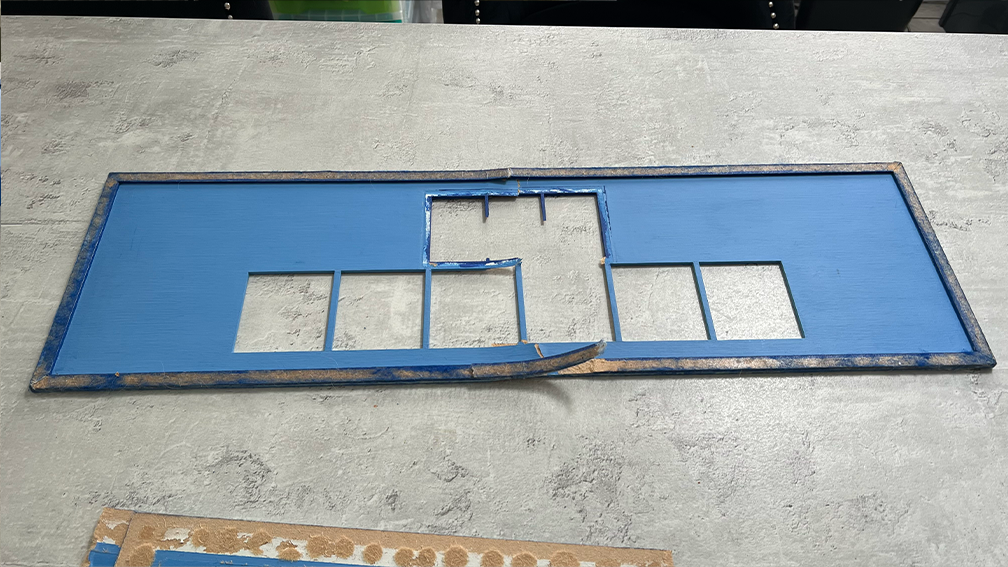
Numbers top piece.
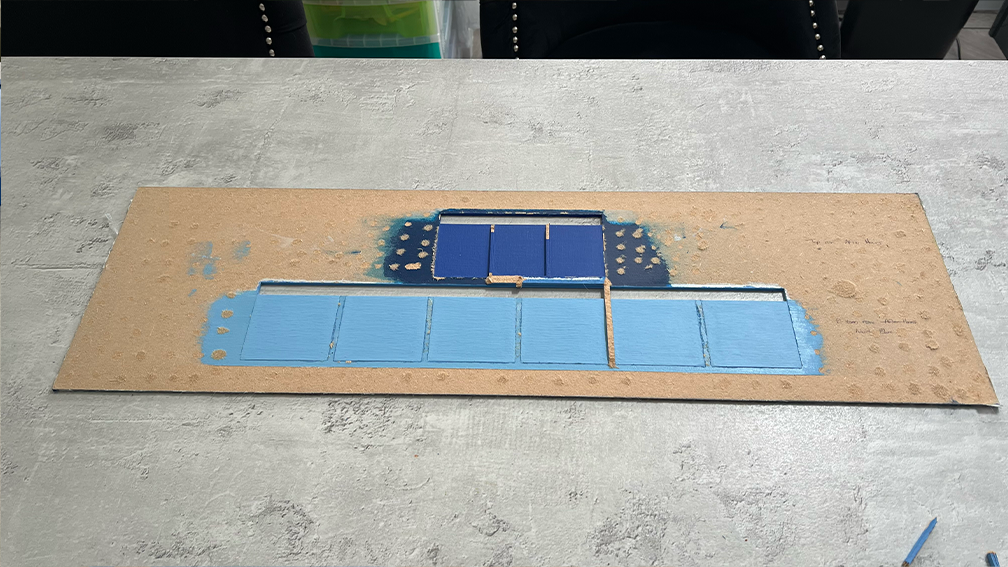
Numbers face, including the original colour of the target section.

Torn-up pieces prior to being scrapped.
The dismantling of the original board in July 2025.
─ ─ ─ ─ ─ ─ ─ ─ ─ ─
Rebuild
By May 2024, the condition of the original board had significantly deteriorated, evident from the photos above. The felt (lined around the edges) had frayed and peeled at the corners, and the paint within the pockets had been badly scratched from the cards being repeatedly slotted in. Development of the rebuild started shortly afterwards, with the first lot of MDF pieces being delivered in July 2024.
▸ Attempts: admittedly, it took an embarrassing eight goes before the rebuild was actually finalised. To begin with, the first attempt at the new version repeated the process of brush-painting the pieces; however, because the strokes were still visible (even after sanding) they prevented the desired outcome. In addition, after realising the paint would scratch just as easily as it did before, the pieces had to be scrapped — they were glued immediately after the paint cured so were therefore unsalvageable.
What followed for attempt two onwards was the conceived "solution" of spray-painting the parts in order to give them a smoother, more professional finish. Unfortunately for me, with the second lot of pieces — which I insisted on being the final lot — I ended up disliking my initial colour choice of Rust-Oleum's "Spa Blue", as it appeared too saturated against the background of the cards. With the pieces having received four thick spray coats before this decision was made, they couldn't be reverted and were also scrapped.
Attempt three, in November 2024, involved masking over the parts and dividing them into sections as a way of testing multiple spray colours. This time, on the other hand, the chosen colour had to closely match that of a frosted blue Perspex cutout of the dividers, which was intended to be laid on top. Ultimately, the frosted cutout darkened whichever colour was under it, so I concluded there was no way to justify using it. I decided to revert the dividers to MDF, while the costly Perspex pieces were put aside; they now live in a box under my couch. Eventually, the two colours I settled on were "Lenor" and "Blue Lagoon" from Montana Cans, both of which are of a close proximity to Wilko's "Moody Blue" and "Surf" shades, which were used on the original board. The process went smoothly at first, but November's cold weather prolonged the drying time and wrinkled the paint. Even the coarsest grit of sandpaper I used was of no benefit in removing all the paint, so this group of parts headed for the incinerator as well.
After nearly three years in use, the original board's last appearance was at the Sheffield 2025 tournament in May of that year. By that time, its condition had significantly deteriorated: the felt lined around the edges had frayed and was peeling, and the paint was badly scratched in the pockets — evident from the above photo from the year before. The pockets had been repainted at the end of 2024, primarily to restore the original two-tone scheme, but this t wasn't enough to cover the scuffs and scratches.
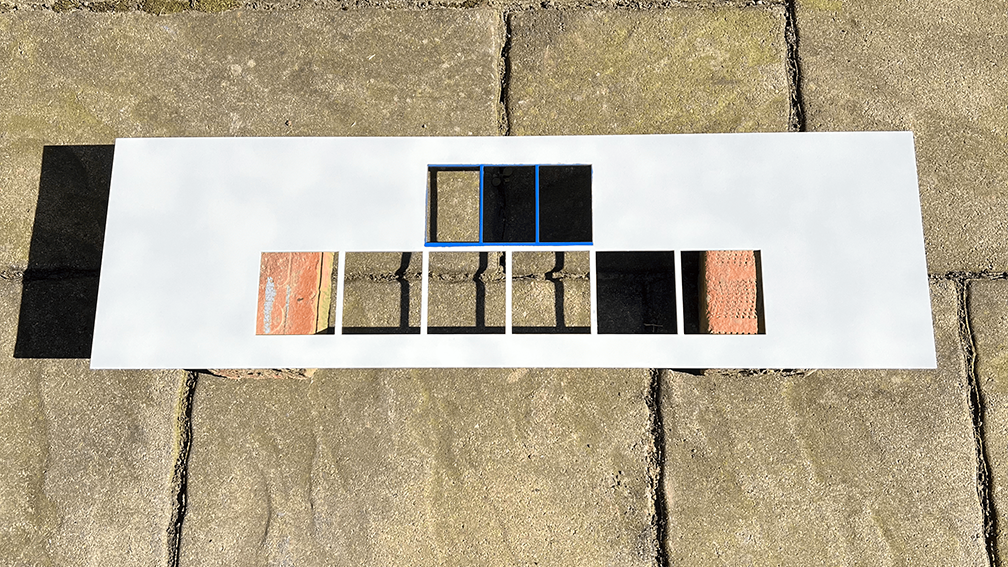
Primed numbers top piece.
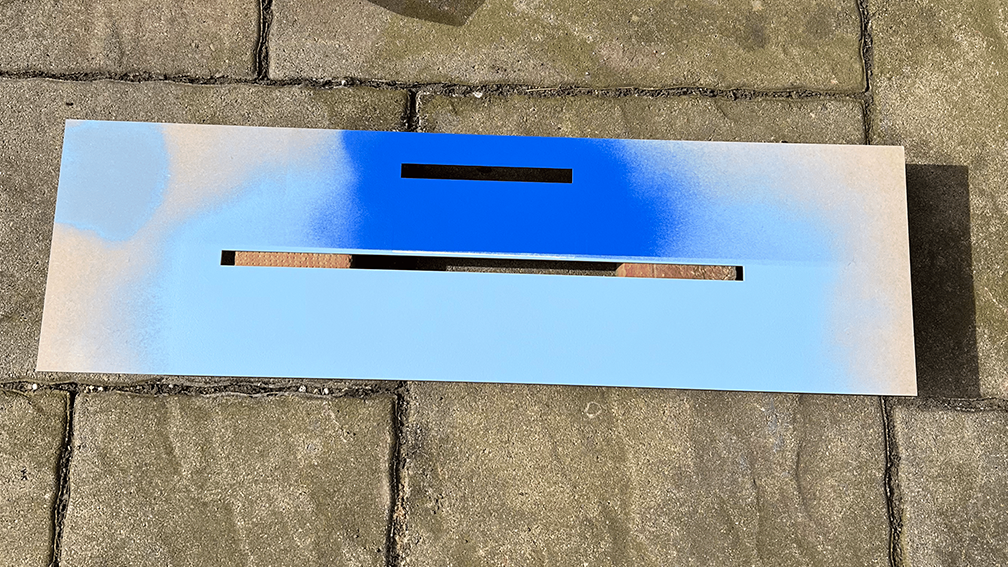
Painted middle piece (numbers face).
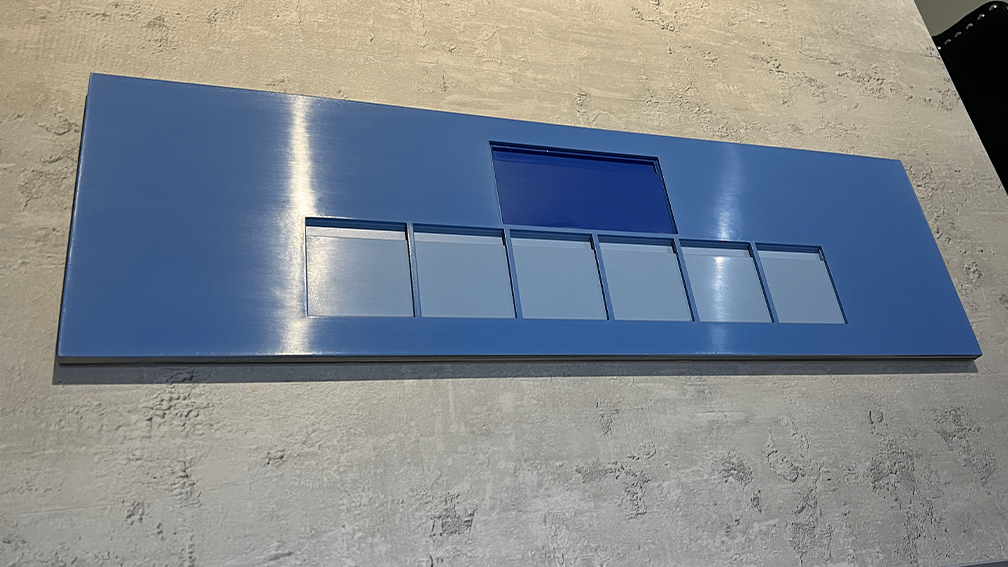
Glossy top piece of the numbers face.
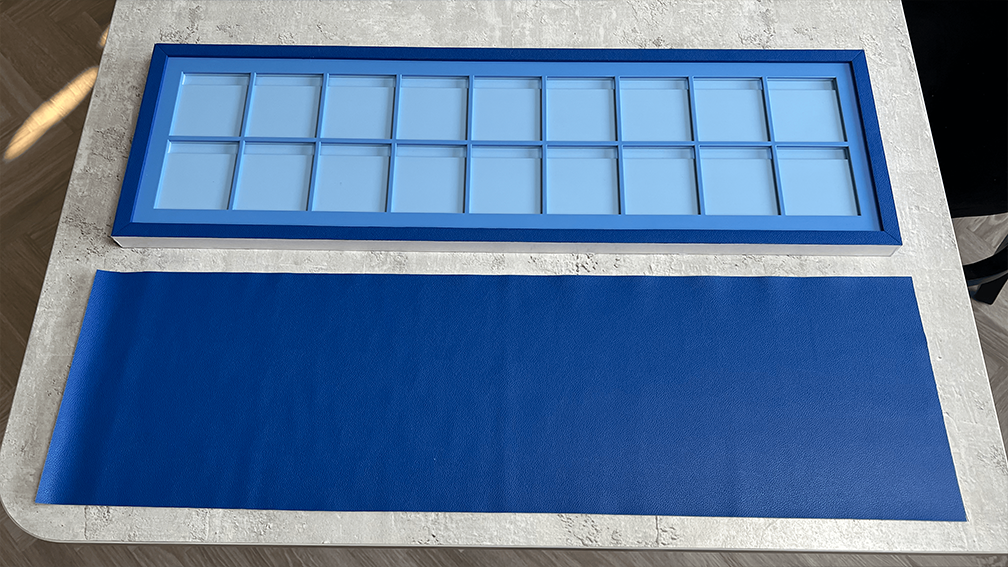
Completed board prior to being lined with leather.
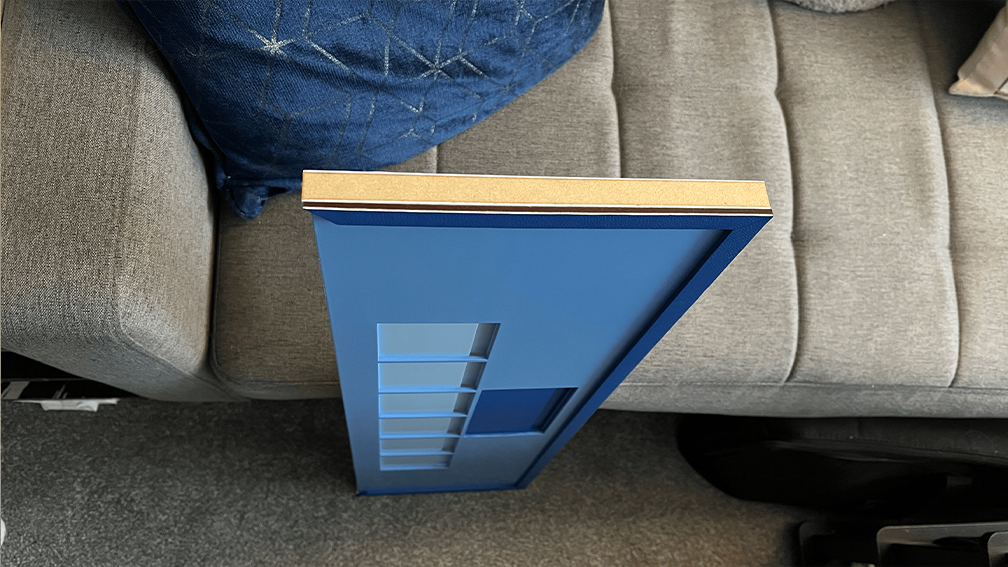
Lining the leather along the side face.
Development of the rebuild.

Letters face of the new board.
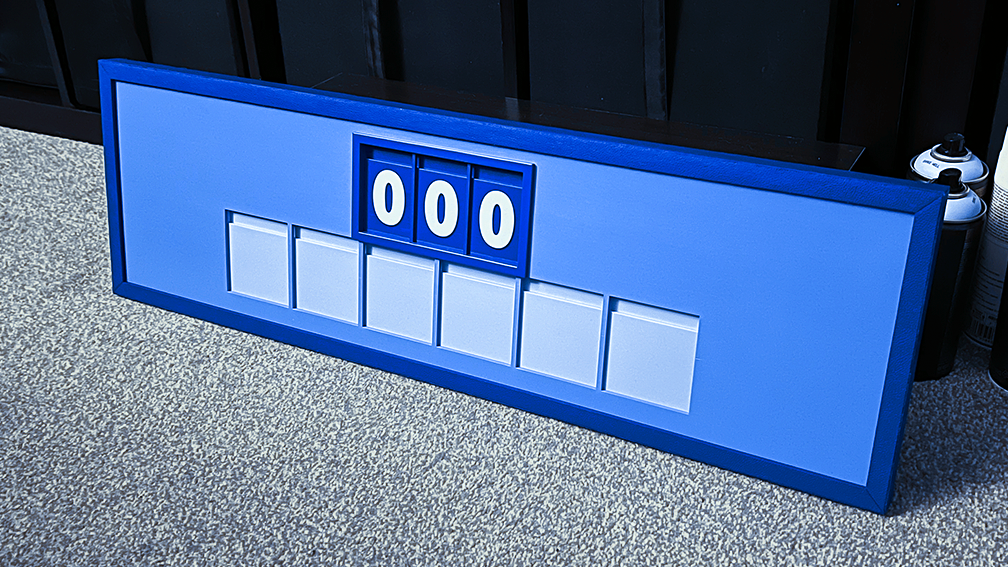
Numbers face of the new board.
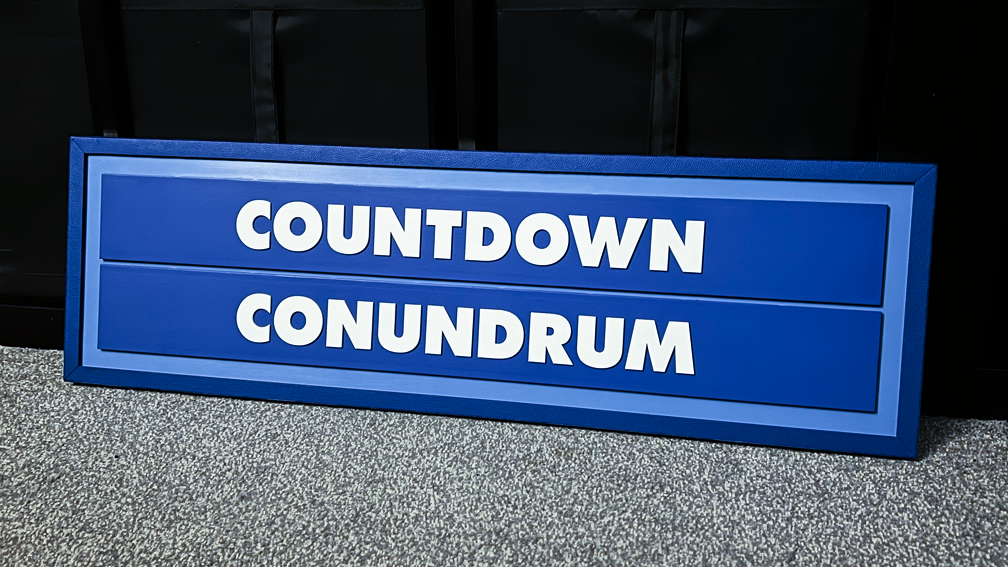
Board with new conundrum covers in place.

Display for the FOCAL Countdown organisation.

Prize table at Durham 2025 (05/07/2025).
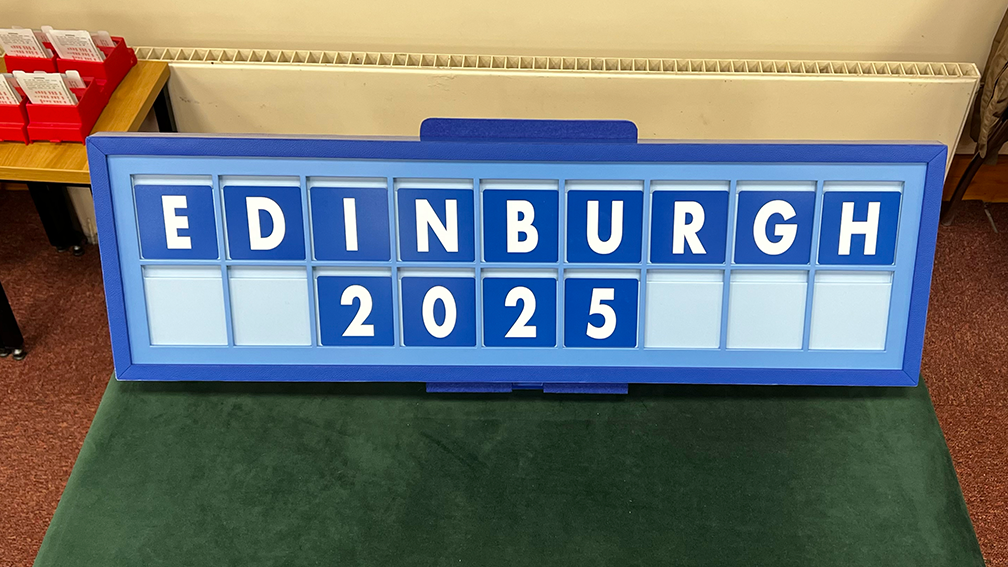
Board display for Edinburgh 2025 (18/10/2025).
The completed version of the rebuilt board.
